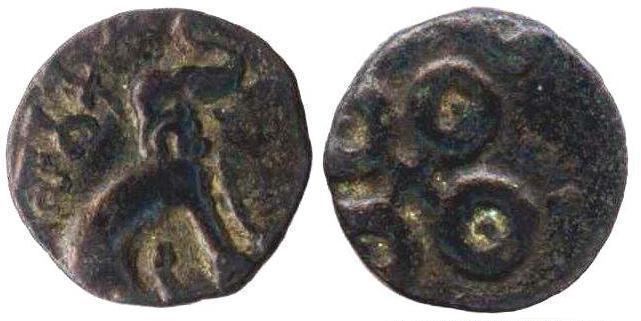Reign 180 BCE Issue VedistriSatisisri Children Satisisri, Vedistri Parents Kunala, Simuka Name Satakarni Satakarni | Successor VedasriSatisiri Died 193 BC Spouse Nayanika (Naganika) | |
 | ||
People also search for Dasharatha Maurya, Samprati, Ashoka, Kunala, Rani Padmavati | ||
Grandparents Ashoka, Rani Padmavati Great-grandparents Bindusara, Shubhadrangi | ||
Real history of gautamiputra satakarni
Satakarni (Sātakarnī I) was the third of the Satavahana kings, who ruled the Deccan region of India. His reign dated variously as 70-60 BCE, or 187-177 BCE.
Contents
- Real history of gautamiputra satakarni
- Gautamiputra satakarni animated life story gautamiputrasatakarni nbk100
- Biography
- Encounter with Kharavela
- Succession
- References
Gautamiputra satakarni animated life story gautamiputrasatakarni nbk100
Biography
According to the Puranas, the Satavahana king Simuka was succeeded by his brother Krishna (also known as Kanha). According to Matsya Purana, Krishna was succeeded by Mallakarni, but according to other Puranas, he was succeeded by Satakarni. The Nanaghat cave inscription of Satakarni lists his family members: it mentions Simuka's name, but not that of Krishna. Based on this, multiple historians conclude that Satakarni was Simuka's son, and succeeded Krishna. G. V. Rao, however, believes that the inscription is that of a different king Satakarni II; Simuka is mentioned in the inscription as the founder of the dynasty.
According to the Matsya Purana, Satakarni enjoyed a long reign of about 56 years. He seems to have conquered Western Malwa region from the Shungas.
He married Nayanika (Naganika), daughter of the Maharathi Tranakayiro Kalalaya, scion of the Amgiya (Ambhiya) family. She wrote the Naneghat inscription, in which she describes Satakarni as "Lord of Dakshinapatha, wielder of the unchecked wheel of Sovereignty". The Naneghat inscription of Naganika suggests that Satakarni performed two horse sacrifices (Aswamedha), to proclaim his sovereignty.
Encounter with Kharavela
The Hathigumpha inscription of the Kalinga king Kharavela mentions a king named "Satakani" or "Satakamini", who is identified with Satakarni. The inscription describes dispatching of an army and Kharavela's threat to a city variously interpreted as "Masika" (Masikanagara), "Musika" (Musikanagara) or "Asika" (Asikanagara). NK Sahu identifies Asika as the capital of Assaka janapada. According to Ajay Mitra Shastri, Asika-nagara was located in the present-day Adam village in the Nagpur district, where a seal mentioning the Assaka has been found. The inscription also mentions a river, variously identified with Krishna or with the combined flow of Kanha-Wainganga.
Since the inscription is only partially legible, different scholars interpret the events described in the inscription differently.
Succession
He was succeeded by his two young sons Vedasri (Khandasiri or Skandasri) and Sakti-Sri (Sati Sirimata) or Haku-Siri, under the regency of their mother Nayanika.
